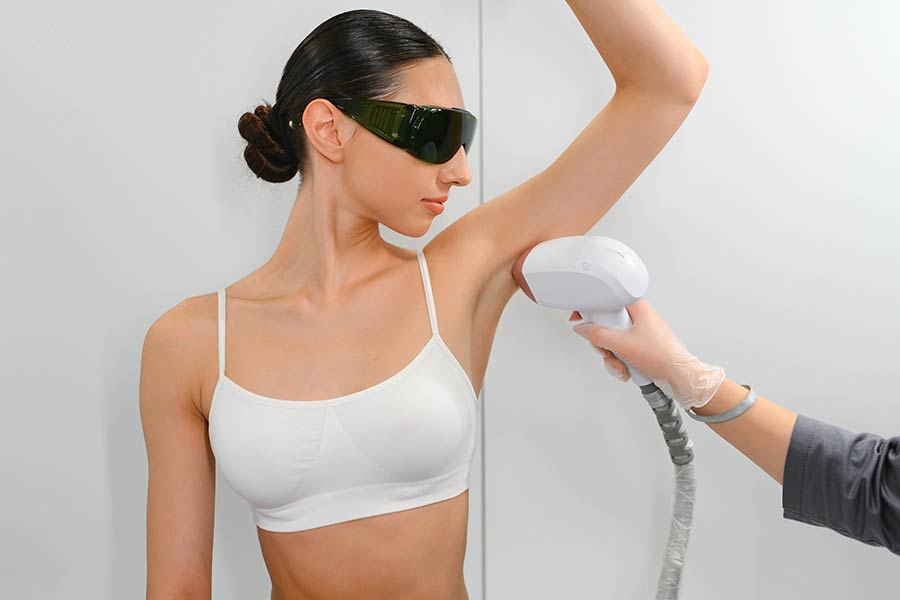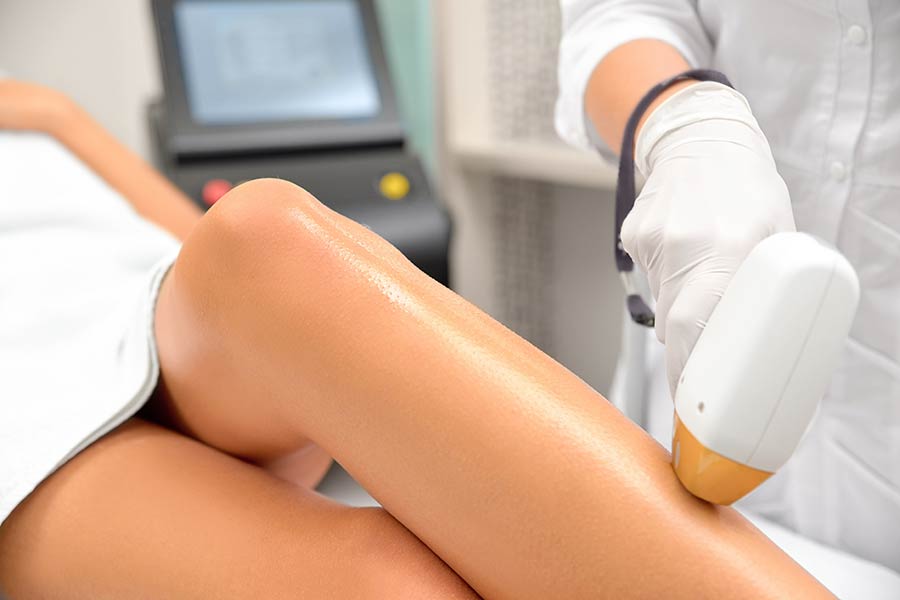Ever wondered if zapping away unwanted hair for good is possible? Well, you're not alone. Diving into the world of laser hair removal might seem like stepping into a sci-fi novel, but it's become a game-changer in the beauty industry. It's all about ditching the razor and saying goodbye to those pesky wax appointments. But here's the million-dollar question: is laser hair removal permanent? Spoiler alert: it's a bit more complicated than a simple yes or no. In this post, we'll slice through the myths, shine a light on the science behind it, and give you the lowdown on what to really expect. So, let’s cut to the chase and get into the nitty-gritty of going smooth.
Key Takeaways
- Laser hair removal can lead to long-term hair reduction, but individual results vary based on factors like hair color and skin type.
- Understanding the science behind laser hair removal helps set realistic expectations about its permanence and effectiveness.
- Preparing properly for treatment, such as avoiding sun exposure and certain medications, can improve the outcome.
- Following post-treatment care instructions is crucial for healing and maximizing the benefits of the procedure.
- It's important to distinguish between myths and reality; laser hair removal is not a one-time solution but can significantly reduce hair growth over time.
- Making an informed decision involves considering all aspects of the process, from preparation to post-care, and consulting with a qualified professional.
Understanding Laser Hair Removal
How It Works
Laser hair removal targets the melanin in hair follicles. The laser's energy is absorbed by the melanin and turns into heat. This heat damages the follicle, aiming to stop future hair growth.
Different sessions are needed for best results. Each session weakens the hair follicles more. The main goal is to reduce hair growth over time.
Hair and Skin Types
The best results happen with dark hair on light skin. This contrast makes it easier for the laser to target melanin. But, effectiveness varies with different combinations of hair and skin types.
Consultation before treatment is vital. It helps assess if laser hair removal is suitable for you. Skin type, hair color, and texture play big roles in this.
Laser Types
Several laser technologies exist for hair removal:
- Alexandrite
- Diode
- Nd:YAG
Each type works better on certain skin types. For example, Nd:YAG lasers are safer for darker skin tones. Over time, technology has evolved to include a wider range of skin types.
This evolution means more people can use laser hair removal safely.
Treatment Areas
Popular areas for laser treatment include legs, underarms, bikini line, and face. Effectiveness can vary based on the area's hair thickness and density.
e areas might need more sessions than others due to these factors.
The Science Behind the Process
Light and Hair Interaction
Laser hair removal works by targeting hair with concentrated light. Dark hair absorbs more light, making it easier to damage. This is because dark colors attract more light energy. Light hair, however, may not soak up enough laser light. This makes the treatment less effective for blondes or redheads.
The success of laser hair removal also depends on skin and hair contrast. High contrast — dark hair on light skin — yields the best results. It allows the laser to focus on the hair, avoiding the skin around it.
Hair Growth Cycle
Hair grows in three main phases: Anagen, Catagen, and Telogen. Anagen is the growth phase when the hair is actively growing from its follicle. This phase is crucial for effective laser hair removal. The reason? The laser targets and destroys hairs that are growing.
Because not all hairs are in the same phase at any given time, multiple sessions are needed. These sessions ensure that hairs in different growth phases get targeted over time.
Impact on Follicles
The laser specifically targets the melanin in the hair follicle without harming surrounding skin areas. When these follicles absorb laser energy, they're damaged. This damage reduces their ability to produce new hairs in the future.
However, not all follicles are destroyed after one session; some might only be rendered dormant. This means they could potentially produce hair again later, leading to regrowth. That's why follow-up treatments are often necessary to maintain smooth skin.
Factors Affecting Permanence
Hair Color
Darker hair colors have a natural advantage when it comes to laser hair removal. They absorb laser light better. This makes the treatment more effective for them. Very light or grey hair, however, poses challenges. These hair colors do not absorb the laser well. For those with less suitable hair colors, advancements in technology offer hope. Some alternatives are now available that can help.
Skin Type
The type of skin you have plays a crucial role in laser hair removal. Laser settings need adjustment for different skin types to ensure safety and effectiveness. Darker skin tones face an increased risk of side effects if the procedure is not handled correctly. Using the correct laser type for one's skin tone is vital. It helps avoid complications and achieves better results.
Number of Sessions
Achieving permanent hair reduction usually requires multiple sessions. The number needed varies greatly among individuals. It depends on factors like hair and skin type, the area being treated, and the hair growth cycle. To align with these cycles, sessions are spaced out.
Realistic Expectations
Permanency Levels
Many people hope for a one-and-done solution when it comes to laser hair removal. However, it's important to understand that while this method can significantly reduce hair growth, achieving 100% permanence is not guaranteed for everyone. Factors such as hormonal changes play a crucial role in the long-term success rates of this treatment. Over time, some individuals may notice minimal regrowth. This new hair is often finer and lighter than before, making it less noticeable.
Maintenance Treatments
To maintain the smooth results, scheduling annual or bi-annual touch-up sessions is advisable. These maintenance treatments are quick and much easier compared to the initial sessions. The frequency of these follow-ups can vary greatly among individuals, depending on their unique hair growth cycles. By keeping up with these appointments, one can ensure sustained results, preserving the smoothness achieved from the original treatment.
Side Effects
It's also vital to be aware of possible side effects associated with laser hair removal. Common reactions include redness, swelling, and temporary pigment changes in the treated area. Fortunately, most of these side effects are mild and resolve quickly without intervention. However, there are rare but serious risks involved as well. Choosing a qualified provider is essential to minimize potential complications and ensure a safe treatment process.
Preparing for Treatment
Consultation Importance
Before starting laser hair removal, a consultation with a professional is crucial. They assess if the treatment suits you and discuss what to expect. Each person's skin and hair are different. So, they tailor the plan to meet your needs. This time is also perfect for asking questions or voicing concerns about the procedure. It ensures you're informed and comfortable moving forward.
Pre-Treatment Care
To get ready for laser hair removal, there are important steps to follow. First, avoid sun exposure and tanning before your session. The sun can make your skin more sensitive to the laser. Also, stay away from certain skincare products that might irritate your skin after treatment.
Shaving the area before treatment is recommended. It helps the laser focus on the hair roots better. However, don't wax or pluck hairs before your appointment. The laser targets the roots, which need to be present to work effectively.
Choosing a Provider
The success of your treatment largely depends on who performs it. Choose a licensed and experienced practitioner for safe and effective results. Do some homework by reading reviews and asking for before-and-after photos from their previous clients. This gives you an idea of their expertise.
Also, check what type of lasers they use. Make sure they're suitable for your skin and hair type to avoid any damage or less effective results.
During the Treatment
What to Expect
Laser hair removal is a journey towards smooth skin. It's important to have realistic expectations. The process won't give instant results but leads to gradual hair reduction over time. A typical session involves targeting hair follicles with laser beams. This might sound daunting, but it's quite straightforward.
Patients often describe the sensation as a rubber band snapping against the skin. While this might seem uncomfortable, it's brief and manageable. The laser targets multiple hairs at once, making each session efficient.
Pain Management
Everyone has a different pain threshold. Thankfully, there are ways to make laser hair removal more comfortable. Numbing creams can be applied before treatment to reduce discomfort. It's worth noting that pain tolerance varies widely among individuals. However, most people find the procedure tolerable.
Advancements in technology mean newer laser models are less painful than their predecessors. These modern machines are designed with patient comfort in mind, ensuring a smoother experience.
Session Duration
The time each session takes depends on the area being treated. Small areas like the upper lip might take just a few minutes. Larger areas, such as the back or legs, could require an hour or more.
Despite this variance in session length, laser hair removal presents a significant time-saving advantage over traditional methods like shaving or waxing. Think of it as investing time now for years of convenience later.
Post-Treatment Care
Immediate Aftercare
Right after laser hair removal, cooling the treated area is key. It helps soothe the skin. You can use a cold pack or a clean cloth dampened with cold water. This simple step reduces discomfort and swelling significantly.
Avoid heat sources for 24 to 48 hours post-treatment. This includes hot showers, saunas, and steam rooms. Heat can irritate the freshly treated skin, causing unnecessary discomfort.
It's also crucial to protect the treated area from the sun. Applying a broad-spectrum sunscreen minimizes UV exposure. This keeps your skin safe and aids in healing.
Long-Term Care
For weeks and months after your treatment, sunscreen remains your best friend. Regular application ensures your skin stays healthy and reduces the risk of side effects from treatment. Choose a sunscreen with high SPF for daily use, regardless of weather conditions.
Using gentle skincare products is another must-do. Harsh chemicals can irritate sensitive post-laser skin. Opt for mild cleansers and moisturizers designed for sensitive skin types.
Keeping your skin moisturized is beneficial too. Well-hydrated skin heals better and maintains its smoothness and elasticity. Look for non-comedogenic moisturizers that won't clog pores.
Sun Exposure
Be extra cautious with sun exposure both before and after laser hair removal sessions. Sun-drenched skin not only risks damage but can also lead to pigmentation problems post-treatment.
Always use a high SPF sunscreen daily, even on cloudy days. UV rays penetrate clouds and windows, so it's essential to protect your skin every day.
Remember, tanned skin may not respond well to laser treatments. It could reduce the effectiveness of future sessions and increase the likelihood of side effects like blistering or discoloration.
Myths vs. Reality
Common Misconceptions
Many people think laser hair removal causes infertility. This is not true. The laser targets hair follicles on the skin's surface. It does not reach or affect internal organs.
e believe it's only for women. Both men and women use laser hair removal to reduce unwanted hair.
Laser hair removal is safe when done right. Make sure a trained professional does it. They know how to use the equipment correctly.
Results are not immediate. Most need multiple sessions to see less hair growth. This is because hair grows in cycles, and the laser works best at a certain stage.
Fact-Checking
It's important to get information from reputable sources. There are many myths about laser hair removal online. Look for information from medical websites or talk to a professional.
Consulting with a professional is crucial. They can give you accurate advice based on your skin and hair type.
Understanding the science behind laser hair removal sets realistic expectations. Know that it reduces hair growth over time but might not remove all hair forever.
Making an Informed Decision
Cost-Benefit Analysis
Laser hair removal might seem expensive at first. But let's break it down. The upfront cost is higher than buying razors or waxing kits. Yet, these traditional methods add up over time.
Think about how often you buy razors or go for a waxing session. It's pretty frequent, right? Now, compare that to the number of laser treatments you'll need. It's less in the long run. Plus, after completing your sessions, you'll see a dramatic decrease in hair growth. This means spending less on hair removal as time goes by.
Another big win is the time you save. No more weekly shaves or monthly wax appointments. Imagine all the extra time for yourself. That alone can be worth the investment.
Comparing Alternatives
Now, let's look at how laser stacks up against other methods like shaving, waxing, and electrolysis.
- Shaving is cheap and easy but needs to be done almost daily to maintain smooth skin.
- Waxing pulls hair from the root, so results last longer than shaving. But it's painful and can cause irritation.
- Electrolysis permanently removes hair by destroying the hair follicle with electricity. It's effective but requires many sessions and can be quite costly.
Laser treatment offers longer-lasting results compared to shaving and waxing, with less hassle and discomfort over time. For those seeking a balance between effectiveness and convenience, it stands out as a compelling option.
Unlike waxing, which often leads to bumps and ingrown hairs, laser treatment typically causes less skin irritation. And unlike electrolysis, which targets each hair follicle individually (taking much longer), laser treatments cover larger areas quickly.
Final Remarks
Laser hair removal? It's not a magic wand, but it's close. We've walked you through the ins and outs, debunked myths, and set straight what you can expect. It’s clear that while not entirely permanent, it offers a long-term solution to unwanted hair. You've got the scoop on how it works, what affects its effectiveness, and how to prep for the best results. Now, armed with knowledge and realistic expectations, you're ready to make an informed decision. Remember, it's all about what works for you and your skin. So, if you're tired of the endless cycle of shaving or waxing, why not give it a shot? Dive in, explore your options, and possibly say goodbye to unwanted hair. Your journey towards smoother skin starts now.
Frequently Asked Questions
Is laser hair removal permanent?
Laser hair removal can significantly reduce hair growth, but it's not usually 100% permanent. Think of it as hitting the pause button on hair growth for a long time.
How does laser hair removal work?
The process zaps your hair follicles with light, turning them into lazy couch potatoes that are too tired to grow hair effectively.
What factors affect the permanence of laser hair removal?
Your hair color, skin type, and the skill of the person wielding the laser all play a role in how effective and permanent your results are.
What should I realistically expect from laser hair removal?
Expect significant hair reduction but pack a little patience. You might need multiple sessions for best results, like episodes in your favorite series.
How do I prepare for laser hair removal treatment?
Stay out of the sun like a vampire and avoid plucking or waxing. Shaving is your new best friend until treatment day.
What happens during the treatment?
You'll feel quick snaps like tiny rubber bands against your skin. It's fast though—imagine a speedy date with technology.
How should I care for my skin after treatment?
Treat your skin like it just had a minor sunburn. Gentle care, moisturizer, and sunscreen are key players here.
What are some common myths vs. reality about laser hair removal?
A big myth is that it's super painful—reality check: it's more uncomfortable than excruciating. Another one: it doesn't work on certain skin types. Nope, advancements have made it more inclusive!
How can I make an informed decision about getting laser hair removal?
Research is your ally. Dive into credible sources, consult with professionals, and listen to real stories to weigh the pros and cons for yourself.












